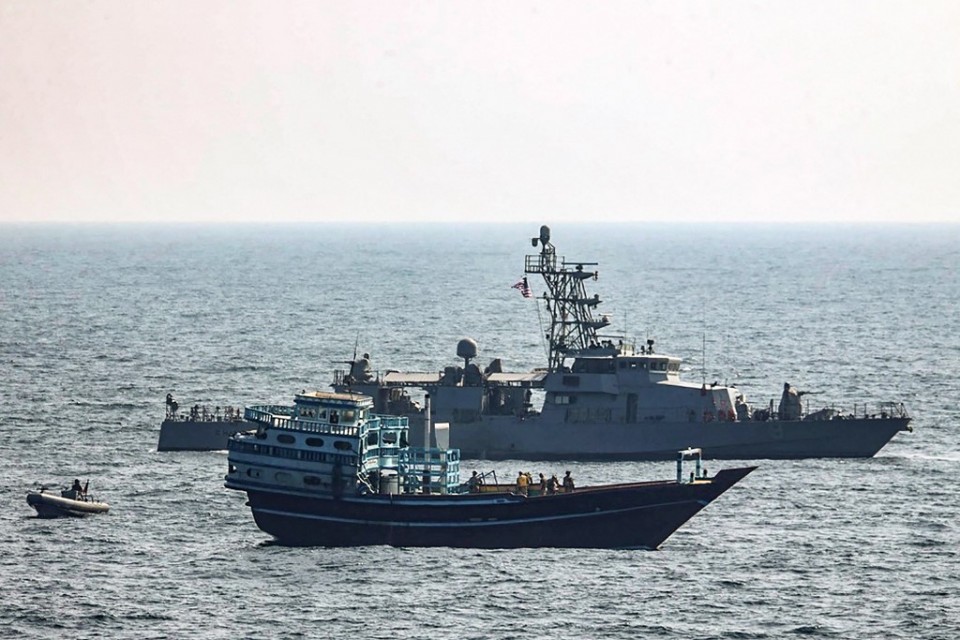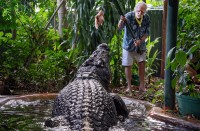by Mohamad Ali Harissi
Agence France Presse
DUBAI, United Arab Emirates (AFP) — The United Arab Emirates on Wednesday said it prevented another drone attack over its territory, after Washington said it will send a warship and fighter jets to help defend its Gulf ally as conflict with Yemeni rebels intensifies.
The UAE, a major financial hub and part of the Saudi-led coalition fighting Yemen’s Iran-backed Huthi rebels for seven years, announced the “interception and destruction” of three “hostile” drones on Wednesday, the fourth similar attack targeting the wealthy state in three weeks.
Although the latest attack was not immediately claimed, it follows missile and drone assaults the Huthis said they carried out this year. Three people have been killed.
The US deployment, to “assist the UAE against the current threat”, follows a phone call between Defence Secretary Lloyd Austin and Abu Dhabi Crown Prince Mohammed bin Zayed Al-Nahyan, the US embassy in the UAE said.

Under the arrangements, the guided missile destroyer USS Cole will partner with the UAE Navy and make a port call in Abu Dhabi, while the US will also deploy “fifth-generation” warplanes, which are the most advanced.
Other actions include “continuing to provide early warning intelligence (and) collaborating on air defence”, the embassy said.
The USS Cole, currently in port in Bahrain, was bombed by Al-Qaeda in the Yemeni port of Aden in October 2000, killing 17 sailors.
Austin and the crown prince discussed the Huthi attacks, which “also threatened US and Emirati armed forces stationed at Al Dhafra air base,” the embassy added.
– ‘Aggression’ –
In the rebel-held Yemeni capital Sanaa, senior Huthi official Sultan al-Samei dismissed the US support.
“These new forces that have arrived or will arrive to the UAE do not frighten us,” he said.
“We will not stop what we have started, defending ourselves… and we will not stop until the aggression against our country stops, as well as when the forces supported by the UAE withdraw.”
The rebel attacks on the UAE have added a new dimension to Yemen’s long-running war, which has killed an estimated 377,000 people directly or indirectly and displaced millions.
Rights groups have long criticised the coalition for civilian casualties in its aerial bombardment.
According to the Yemen Data Project, an independent tracker, there have been almost 9,000 civilian casualties from coalition air raids on Yemen since 2015.
But last month the war began to hit home for Emiratis.
Three foreign workers were killed in a drone and missile assault targeting Abu Dhabi’s oil facilities and airport on January 17, triggering a salvo of deadly air strikes in retaliation.
On January 24, US forces stationed at Abu Dhabi’s Al Dhafra air base fired Patriot interceptors and scrambled to bunkers as two ballistic missiles were shot down over the city, the UAE capital.
And on Monday, a third missile attack was thwarted during a visit to the UAE by Israeli President Isaac Herzog.
– ‘Clear signal’ –
The US intends its deployment to be “a clear signal that the United States stands with the UAE as a long-standing strategic partner”, the embassy said.
President Joe Biden withdrew US support for the Saudi-led intervention in Yemen after taking office early last year, reversing his predecessor’s policy of providing logistical assistance.
However, the US State Department announced in November the approval of the sale of $650 million worth of air-to-air missiles to Saudi Arabia to help the country protect itself from Huthi drone attacks.
A $23-billion US arms package to the UAE, including F-35 fighter jets, has yet to be finalised, with the Emiratis threatening to scrap the deal over stringent conditions.
The rebel attacks have increased Gulf tensions at a time when international talks over Iran’s nuclear programme are stumbling, and have helped push oil prices to seven-year highs.
They began after a series of defeats on the ground in Yemen, inflicted by the UAE-trained Giants Brigades militia.
In early January, the rebels seized a UAE-flagged ship in the Red Sea, saying it was carrying military equipment — a claim denied by the Emirates.
Yemen’s civil war began in 2014 when the Huthis seized the capital Sanaa, prompting Saudi-led forces to intervene in support of the internationally-recognised government the following year.
The UAE, one of the world’s biggest arms buyers, announced a redeployment from Yemen in 2019 but remains an influential player.
The UN calls Yemen the world’s worst humanitarian crisis, with millions on the brink of famine.
© Agence France-Presse








